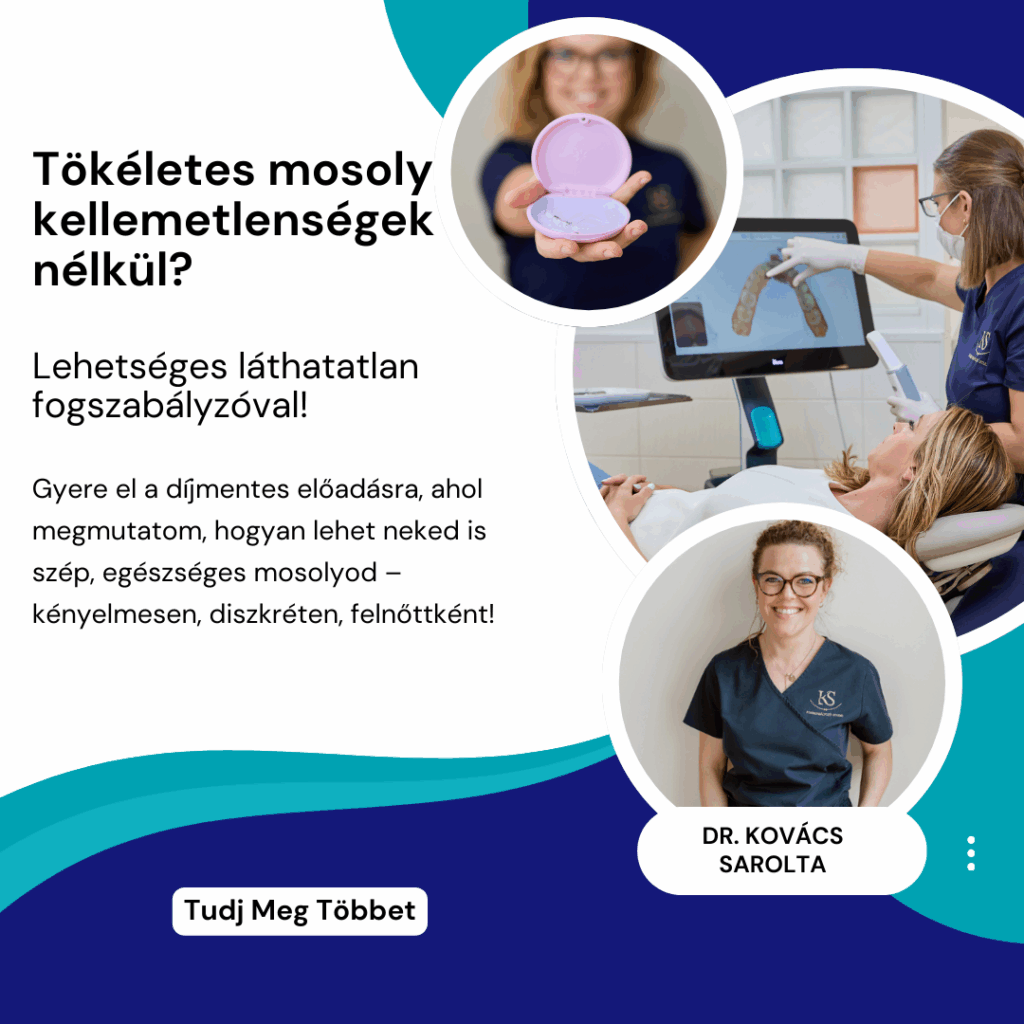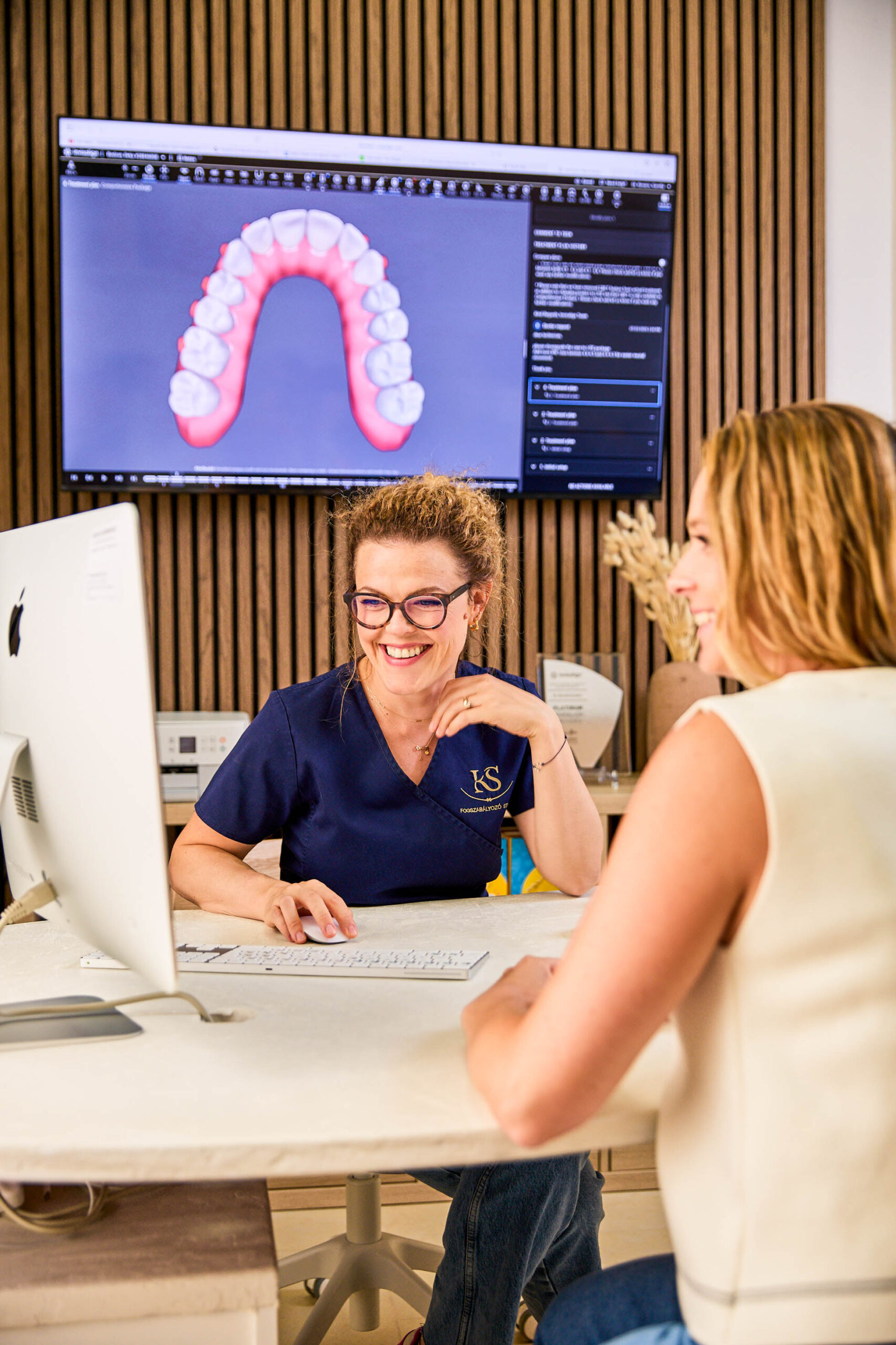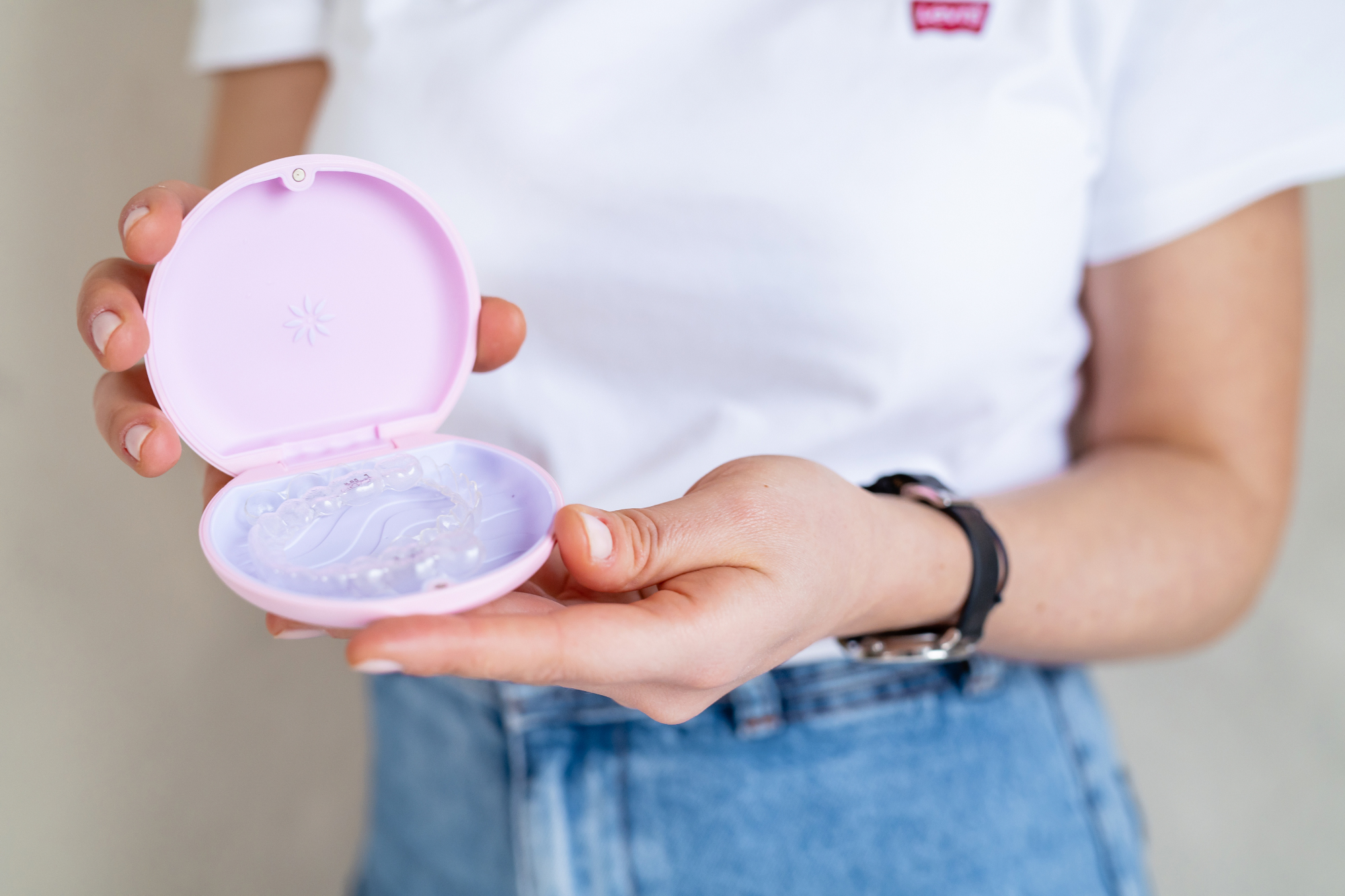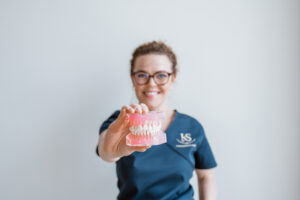When is it recommended?
Already 7 years old it is worth starting orthodontic treatment, which can be make you painless, a However, there are many harmful beliefs and misconceptions about orthodontic treatment in children.
For a long time, orthodontics meant pain, uncomfortable meals and embarrassing looks - especially as a teenager. Many parents still take their children to see a specialist too late, when problems are obvious, even though many abnormalities are more difficult or impossible to correct.
Why is seven the winning number?
The process of orthodontic treatment ideally starts around the age of 7, when the skeleton still easily malleable, and treatments can achieve spectacular results more quickly and with less intervention. A modern technologies now also allow children to receive a painless, playful and accurate diagnosis and fromsee their own future smiles, so they are more motivated to cooperate during treatment.
What to look out for?
What are the warning signs to look out for as soon as possible to a specialist contact and how can hyperactivity be related to the condition of the teeth?
In the field of orthodontic treatment in children significant progress happened in recent years, thanks to modern treatment procedures and advances in technology. The latest tools more secure, faster and more efficiently help you manage any discrepancies, while wearing them almost invisibly.
However, public awareness remains high of many harmful and misconceptions, so that children are usually only placed in competent hands, when their permanent teeth have emerged. This idea often takes years pushes out the first inquiry, while jaw growth, bite alignment and certain dental abnormalities should start much earlier - ideally around the age of 7, well before the before puberty.
A health risk?
It's not just an aesthetic issue: delays can add years to treatment. The aim of orthodontic treatment is not just a beautiful smile, but ehealthy bite and proper jaw development Insurance.
Some differences - for example, the cross bite, open bite or
deep bite - may be easier to correct at the age of 7-9 years, but if it is opportunity missed, after the end of growth, often only surgical intervention to achieve the desired result.
Early treatment allows the bones and teeth to respond flexibly to subtle forces, so therapy can be shorter, with less discomfort and less chance of relapse. A
in addition to straightening the teeth, the treatment supports speech development and chewing function, and can even affect posture.
Good to know!
Few people know that differences in the dental arch sleep apnoea and chronic
for mouth breathing which can lead to less oxygen reaching the child's body during sleep. This can affect sleep quality and the development of the nervous system, so fatigue and
can cause concentration problemsand, in the longer term, the hyperactivity or ADHD also contribute to the development of
can contribute - even though this could be prevented.
"Procrastination can not only lead to longer, but often more costly treatment and in some cases permanent abnormalities. It is worth watching for signs that it is always worth consulting a specialist: such as crossbite, deep bite, prominent receding lower jaw, irregular or narrow dentition, persistent mouth breathing, frequent snoring, tongue thrust swallowing, prolonged sucking or sucking of the teat.
Childhood absence or late onset not only affects the health of your teeth or jaw, but also can affect young people's self-confidence, social relationships and even lead to anxiety" -Stresses Dr. Sarolta Kovács, head of KS Orthodontics and Dental Studio.
A revolutionary change in children's orthodontics - when you see your future smile!
Previously, treatment for children was divided into two long phases: first removable, mainly worn at night to control jawbone growth, and years later with fixed braces the remaining teeth were straightened, so this process could take up to 3-4 years.
Today, transparent rail technology however, it allows the two treatment phases to be combined and to align the remaining teeth and control facial development at the same time, even in mixed dentition. These
rails, moreover are comfortable during speech and sport can also be worn at mealtimes are easy to remove.
"At the first appointment, we not only assess the condition of the teeth, but also make sure that the child in a stress-free, playful way get to know the practice. This foundation of trust is very important contribute to successful cooperation in subsequent treatments" - says the expert.
The modern, 3D digital scanning is completely painless and takes just a few minutes. Even at the first consultation, the visualisation plan created with the help of artificial intelligence will show you the child's expected smile, and even make the change visible on video. A treatment has also been via the app can also be tracked, so that personal checks can be which is a great help in managing busy parents' schedules.
"Digital design and spectacular forecast that not only inspires parents, but also children. If they can see the target themselves, are more willing and more persistent the device, and with visual aids, they will have a much better understanding of the process - all thanks to modern technology" - stresses Dr. Sarolta Kovács.
Here is your chance!
Anyone who wants to learn more about the possibilities and modern solutions for orthodontic treatment in children,
you can join the for the webinar on 11 September, where the specialists of KS Orthodontics and Dental Studio
they share their experiences and practical advice on the subject.







